Don’t Have Glutinous Rice? Here are the Best Sticky Rice Substitutes
You’re using glutinous rice for a reason, and that’s mostly because of what its quality offers that makes it stand out from other types of rice.
Plus, they make an excellent ingredient for Philippine Biko, Japan’s sushi rolls, or even Thailand’s mango sticky rice.
But what if you currently don’t have sticky rice available and you don’t have time to look around your favorite Asian store? Or even if you have time, there simply isn’t any sticky rice available?
I know, I can only imagine the frustrations. But no worries, because here are the best substitutes for glutinous rice that you’ll surely love!
The best substitute for glutinous rice is jasmine rice. Jasmine rice is a long-grain, aromatic rice that has a subtle floral aroma and a slightly sweet taste. When cooked, jasmine rice is soft and fluffy, making it a great substitute for glutinous rice.
Other types of rice can also work, and I’ll explain which ones are best to use for your dishes as a replacement for sweet rice.

Check out our new cookbook
Bitemybun's family recipes with complete meal planner and recipe guide.
Try it out for free with Kindle Unlimited:
Read for freeIn this post we'll cover:
What makes a good substitute for glutinous rice?
Glutinous rice, also called sweet rice or sticky rice, is a type of rice that is higher in amylopectin than in amylose, making it sticky when cooked.
Glutinous rice has a subtly sweeter taste than regular rice and is a perfect ingredient for making desserts.
The best substitutes for glutinous rice would be those that can provide the same stickiness and chewiness.
And since glutinous rice is often used in desserts, the substitutes should also be able to absorb flavors well.
Best glutinous rice substitutes
Let’s take a look at some of the best substitutes for glutinous rice.
Jasmine rice
If you’re looking for a substitute that’s easily available, then look no further than jasmine rice.
Jasmine rice is a long-grain, aromatic rice that’s commonly used in Thai and Vietnamese cuisine. It has a subtle floral aroma and a slightly sweet taste.
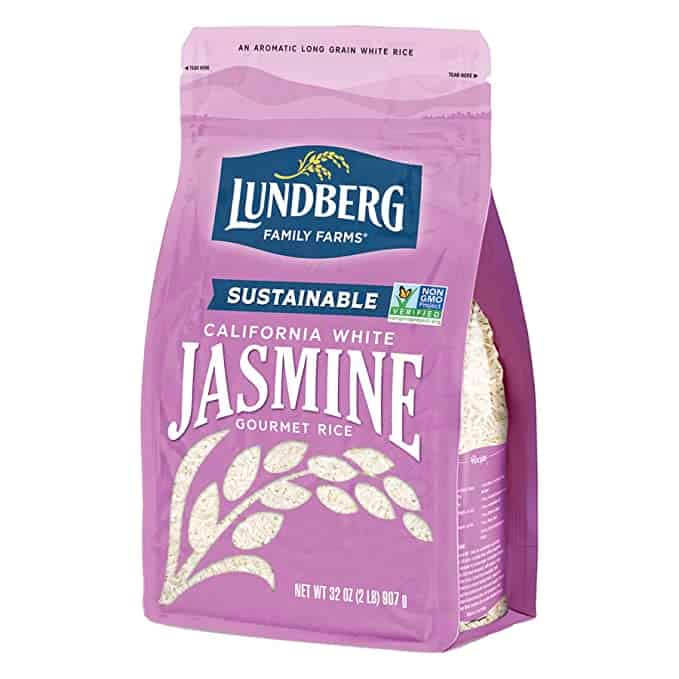
Congee, fried rice, and steamed dumplings are just a handful of the numerous Asian dishes that could benefit from this component.
When cooked, jasmine rice is soft and fluffy, making it a great substitute for glutinous rice.
To substitute jasmine rice for glutinous rice, simply cook the jasmine rice in the same way you would cook glutinous rice.
The water ratio for jasmine rice is 1:1. I like the organic Jasmine rice from Lundberg family farms.
Try jasmine rice the next time you are making yummy sweet Ginataang Monggo (Filipino dessert)
Arborio rice
Arborio rice is an Italian short-grain rice that’s commonly used in risotto.
It’s higher in amylose than jasmine rice, but still has a stickiness that makes it a great substitute for glutinous rice.
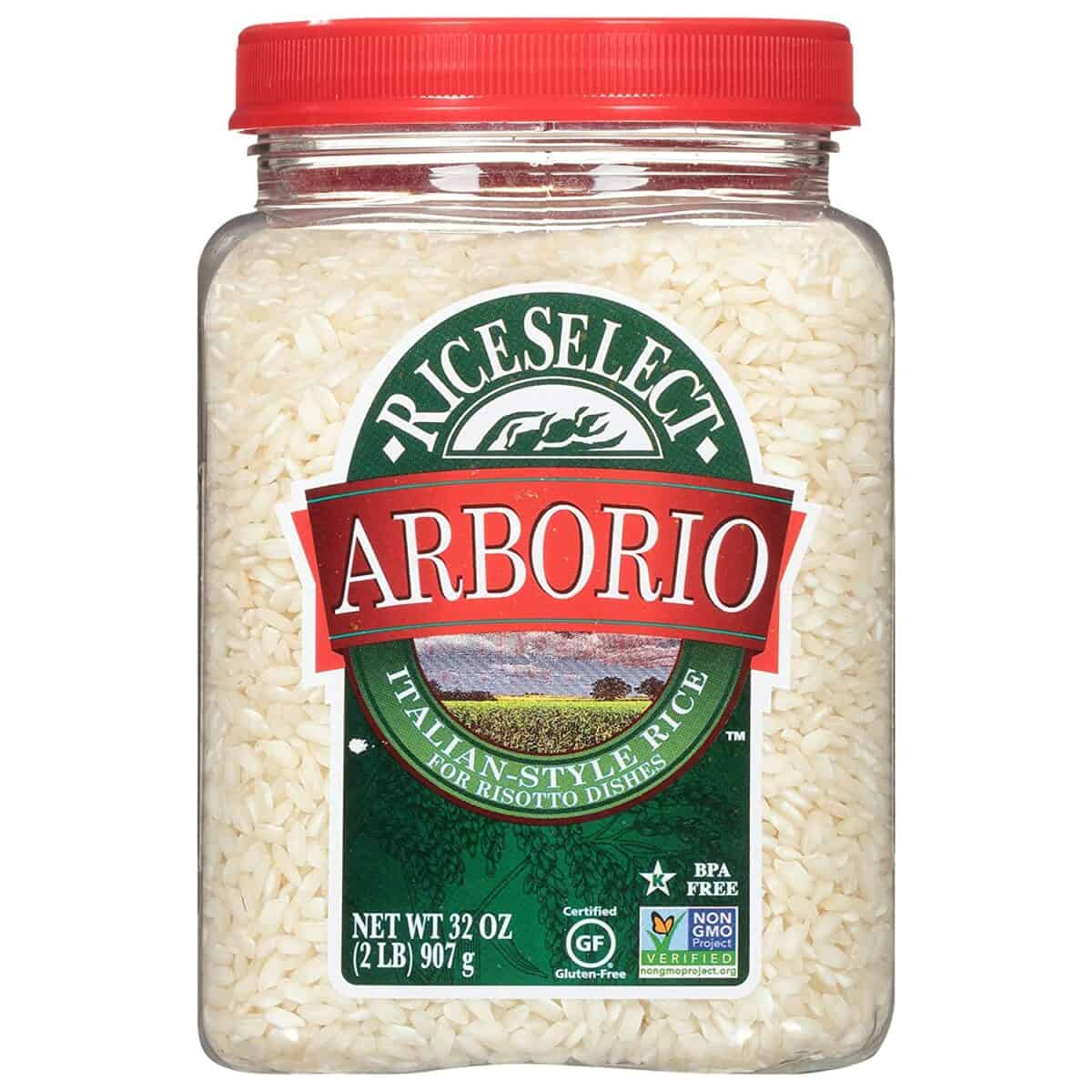
The best feature of this rice is that it goes well with both meat and seafood.
When cooked, arborio rice is firm yet tender and creamy, making it perfect for risotto, paella, sushi rolls, and even desserts.
The ratio of water to arborio rice should be 2:1. So for every 1 cup (250 ml) of arborio rice, you’ll need 2 cups (500 ml) of water.
RiceSelect offers good quality arborio rice in a handy storage container to keep it fresh.
Sushi rice
Sushi rice is a type of short-grain rice that’s commonly used in Japanese cuisine.
Sushi rice is a good substitute for sticky rice because it is a short-grain rice that is more sticky than long-grain rice and has a higher starch content than most other types of rice
When cooked, it’s sticky yet firm, making it perfect for sushi rolls and onigiri balls. It also has a slightly sweet taste and a mild aroma.
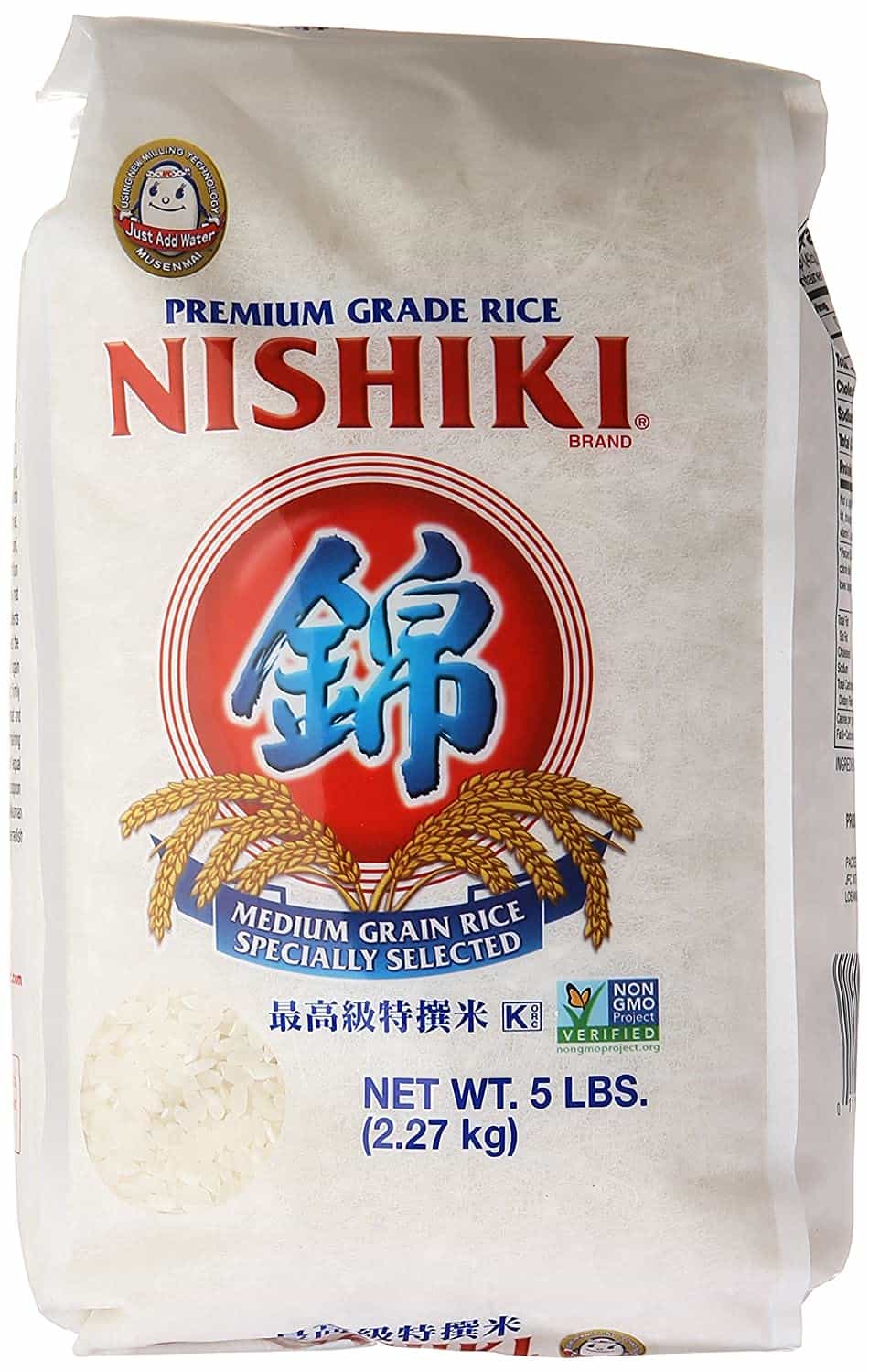
To substitute sushi rice for glutinous rice, simply cook the sushi rice in the same way you would cook glutinous rice.
The ratio of water to sushi rice should be 1:1.5. So for every 1 cup (250 ml) of sushi rice, you’ll need 1 and 1/2 cups (375 ml) of water.
Nishiki offers great authentic Japanese sushi rice.
White rice
White rice is the most common type of rice and is often used as a filler ingredient.
When cooked, white rice is soft and fluffy, making it a great substitute for glutinous rice.
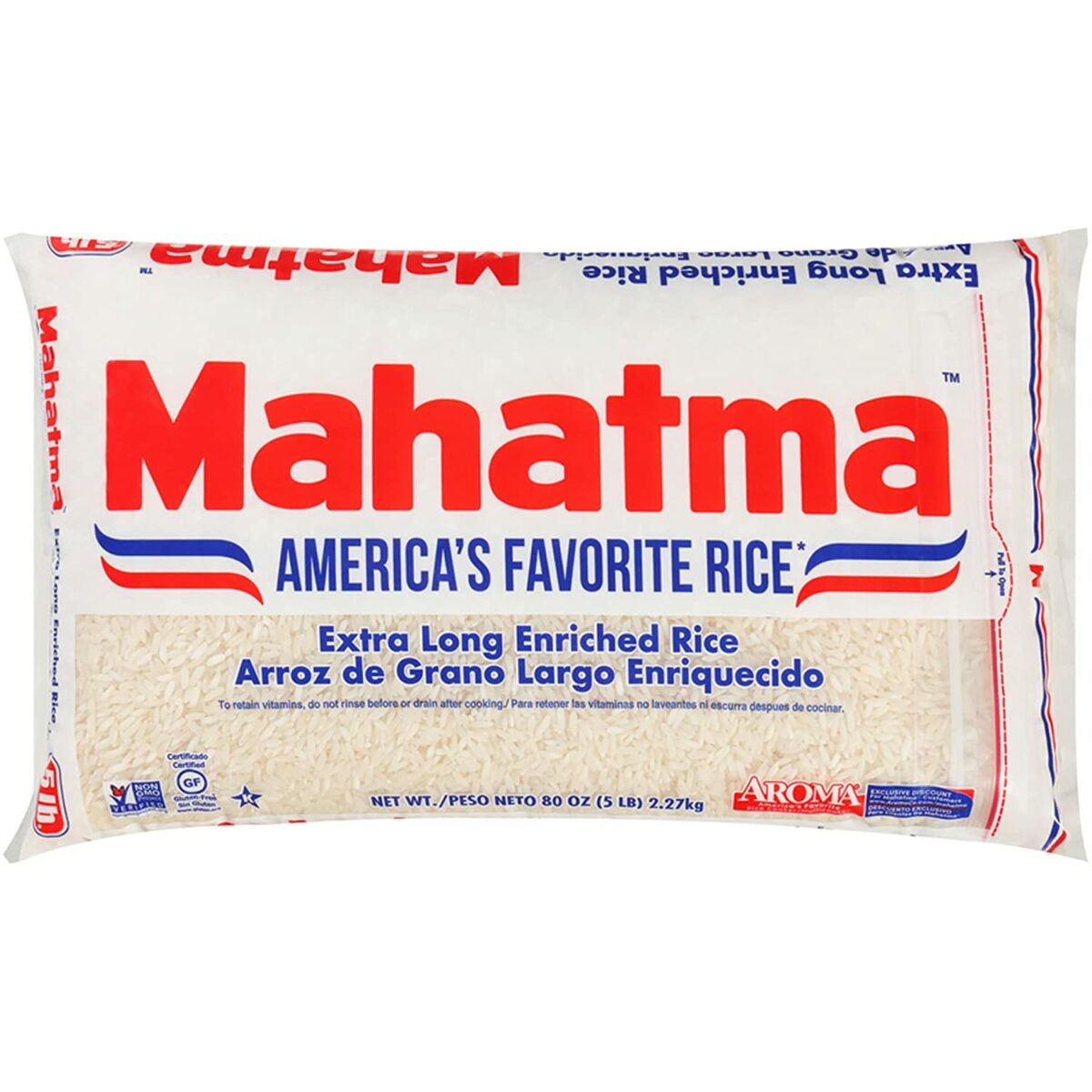
However, unlike the original glutinous rice that is mainly used in desserts, white rice in Southeast Asian countries is often served as a regular meal with many other dishes.
To cook white rice, the ratio of water to white rice should be 2:1. So for every 1 cup (250 ml) of white rice, you’ll need 2 cups (500 ml) of water.
Also remember that while you have a rice substitute, this one will not have any sticky quality when cooked.
But because of its softness and fluffiness, your can still use white rice as a substitute. However, if you really want to get your dish sticky, simply add a little amount of cornstarch.
Simply use white rice and add a cornstarch as the sticky element to make dishes, such as Philippine Biko and Puto Maya, or Japan’s Okowa.
Find white rice at any supermarket or online, like this one from Mahatma.
Bomba rice
Bomba rice is a type of short-grain rice that’s native to the Valencia region in Spain. It’s often used in paella and other Spanish dishes.
When cooked, bomba rice is slightly sticky and chewy, making it a great substitute for glutinous rice.
Bomba rice, like this one from Matiz, can be used in various more creative and unique recipes, including poke bowls, desserts, risottos, and croquettes, even though it is typically used for soupy rice, creamy rice, and paellas.
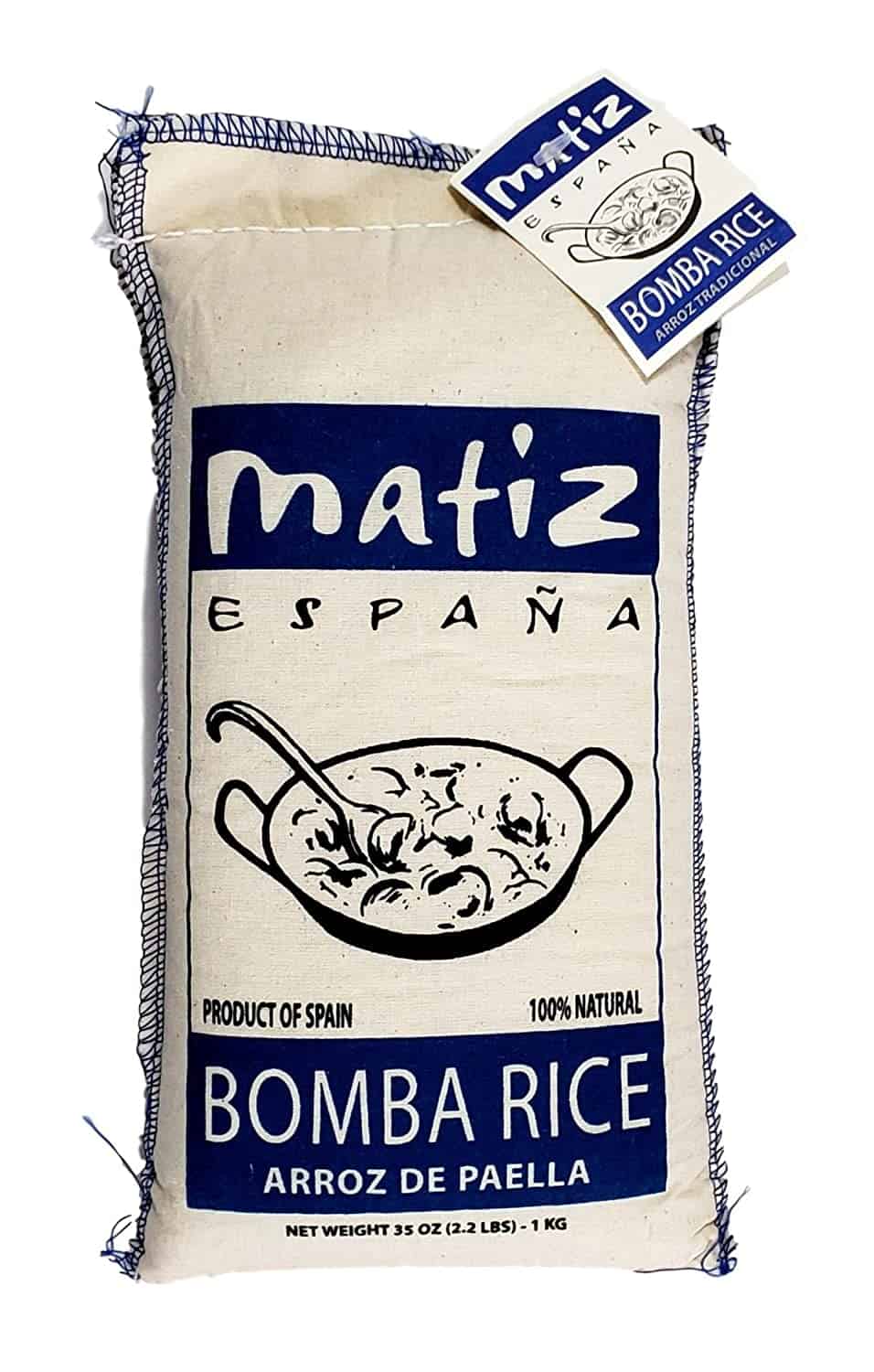
The ratio of water to bomba rice should be 1:2. So for every 1 cup (250 ml) of Bomba rice, you’ll need 2 cups (500 ml) of water.
This type of rice is also less likely to absorb flavors, so it’s often used in dishes with strong flavors, such as paella.
Feeling like paella now? For a twist on the classic try this Filipino Paella De Marisco Recipe
FAQ
I know you’re very much excited about the cooking, but let me clear out some things here.
Is jasmine rice the same as glutinous rice?
No, jasmine rice and glutinous rice are not the same. Jasmine rice is a type of long-grain rice that’s commonly used in Thai cuisine, while glutinous rice is a type of short-grain rice that’s often used in desserts.
Is sweet rice and glutinous rice the same?
Yes, sticky rice, also known as sweet rice, and glutinous rice, are the same, and they are characterized by their sticky texture when cooked because of their high amylopectin content.
What is the difference between glutinous rice and glutinous rice flour?
The difference between glutinous rice and glutinous rice flour is that glutinous rice is the whole grain, while glutinous rice flour is made by grinding the whole grain into a powder. The texture of glutinous rice flour is finer, and it’s often used as a binding agent or to thicken sauces.
How is jasmine rice different from white rice?
Jasmine rice is a type of long-grain rice that’s commonly used in Thai cuisine, while white rice is the most common type of rice and is often used as a filler ingredient.
When cooked, jasmine rice is slightly sticky and fragrant, while white rice is soft and fluffy.
Jasmine rice also has a higher amylose content than white rice, which means it’s less likely to absorb flavors.
Can you make mochi with regular rice?
No, you can’t. To make mochi, you will need to use mochigome, or sticky rice flour. This component is necessary for the distinctively chewy texture of mochi.
Conclusion
Remember, just because you don’t have sticky rice on hand doesn’t mean you can’t enjoy your favorite dishes.
So, the next time you find out you don’t have any glutinous rice stock in your kitchen, simply look around and see if you have anything that sounds like the five above.
They may not be as sticky, fluffy, or even sweet as your original glutinous rice, but they’re the closest. So try them with your favorite glutinous rice recipe as a substitute!
Check out our new cookbook
Bitemybun's family recipes with complete meal planner and recipe guide.
Try it out for free with Kindle Unlimited:
Read for freeJoost Nusselder, the founder of Bite My Bun is a content marketer, dad and loves trying out new food with Japanese food at the heart of his passion, and together with his team he's been creating in-depth blog articles since 2016 to help loyal readers with recipes and cooking tips.

